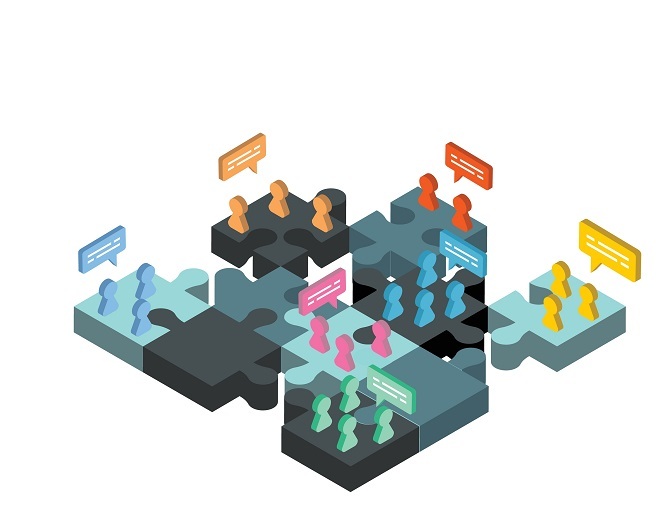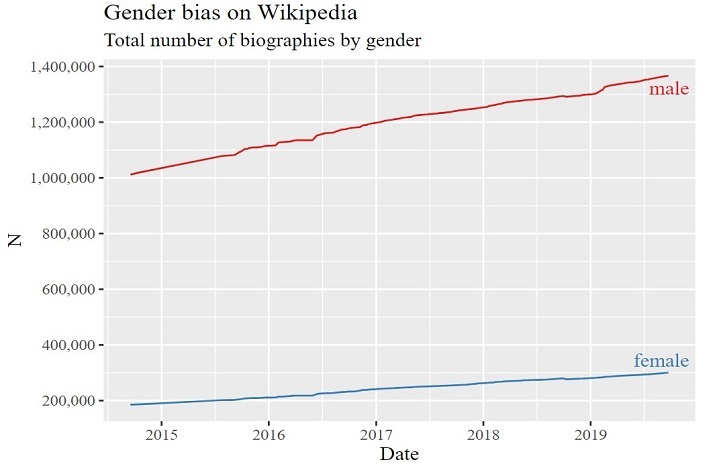
 Data Structure
Data Structure Networking
Networking RDBMS
RDBMS Operating System
Operating System Java
Java MS Excel
MS Excel iOS
iOS HTML
HTML CSS
CSS Android
Android Python
Python C Programming
C Programming C++
C++ C#
C# MongoDB
MongoDB MySQL
MySQL Javascript
Javascript PHP
PHP
- Selected Reading
- UPSC IAS Exams Notes
- Developer's Best Practices
- Questions and Answers
- Effective Resume Writing
- HR Interview Questions
- Computer Glossary
- Who is Who
What are the Different Types of Unconscious Bias in the Corporate Environment?
Introduction
It is crucial for us to understand the different unconscious biases in the corporate environment in order to fight them. These biases not only create a negative atmosphere but also hamper the work of employees. They are prevalent and hence need to be fought over with understanding and more knowledge.
In this tutorial, we will be diving deep into the different types of unconscious bias in the corporate environment.
Different Types of Unconscious Bias in Corporate Environment
The Halo Effect

Image 1 ? Segmentation among employees based on shared beliefs, affinities and interests, etc.
People are considered to possess certain qualities just because they have a quality or they look in a certain manner. In simple terms, it means that an individual is going to have X, Y, and Z qualities because he has A, or an individual is considered to be well-mannered, charismatic, and smart just because he looks good. This is a bias because the individual is going to get the upper hand without even doing anything or proving their worth. Another good example is to consider someone who speaks good English to be well-read and intelligent. This bias may profit the individual, but the other individual who might have the real skills can be looked down upon because he might not look as good as he does.
Affinity Bias
Affinity bias is like having someone on the team or hiring someone just because they are similar to you or have the same likes as you. Affinity bias is a bias in which the skill set of the individual is overlooked or compromised just because he likes or belongs to the same ethnicity, case, creed, or religion, or has the same likes and dislikes as the individual across the table. Here the quality of work might differ, but someone would ask, "Why would an individual perform affinity bias?" Well, the answer is that we humans do not like change. Someone who is not like us may require us to change our thought processes, ways of working, ways of celebrating, and others.
To better understand this affinity bias, let's start with examples. A male-dominated team with no female member might not want to include a female in their group because then they would have to make considerations as per two different genders. Affinity bias helps an individual stay in their comfort zone.
Attitudinal Bias
This is basically a type of bias in which people keep making assumptions regarding people of a specific gender, caste, religion, age, and others. Attribution bias can also happen in terms of the educational qualification of the individual, the institute one is attending, the family structure one is coming from, the childhood of the individual, the cultural habits of an individual, and others.
For example, some people might find women to be incompetent in their tasks, and hence they will undervalue their accomplishments and overvalue their mistakes to suit their bias or assume that since an individual is old, they will not be tech-savvy. Here the real facts and contribution of the individual are looked down upon, and all that is given consideration is the bias that the individual holds for the other gender, caste, religion, age, and others.
Gender Bias
This is a very common type of bias in which people of other genders are given a disadvantage. Here, the family counterparts, or the LGBT+ society, suffer a lot. A lot of jobs are assigned to men's jobs, and women cannot even enter those jobs. Gender-neutral words like "police individual" and "washer individual" are being used and taught in schools to remove this bias at a very elementary level.
Example

Image 2 ? Graph showing the total number of English Wikipedia biographies by gender between September 2014 and September 2019.
(Attribution: Joe Roe, English Wikipedia biographies by gender (WHGI), CC BY-SA 4.0)
Preferring Certain Names Bias
This is a type of bias in which the race, ethnicity, and religion of an individual are tried to determine through their name, and the individual is not given a fair chance just because of that. Preferring certain names can be done by saying that the individual might not fit in our culture, working policy, or other things, but this is plain and simple wrong and the company will not be doing this.
The Horn Effect
The Horn Effect is the opposite of the Halo Effect. Here, the individual is set a disadvantage only because he might look in a different way, or he might not speak good English, or because he is of a certain caste, region, race, ethnicity, etc.
A few good examples to better understand this bias could be that since the individual is a male Muslim, he has a good chance of being a threat or a terrorist, or that someone who cannot speak good English might not be intelligent and well-read. These biases give an unfair disadvantage to the individual in consideration without actual facts in place.
Confirmation Bias
Confirmation bias refers to ignoring information that confirms your bias and only collecting information that confirms it. This bias is done by individuals to prove their viewpoint.
Bro Proportionating or Bro Behavior Bias
This is a type of bias in which, for example, if a woman gives an idea, it is ridiculed or mulled over, but as soon as the same idea is given by the male gender, it is celebrated and appreciated. This type of bias creates a difficult working environment for female or LGBT+ counterparts. Here, the company sticks with behavioral bias.
Weight Bias
In this type of bias, an individual of a certain weight could be considered to be unhealthy or malnourished. For example, an overweight employee is considered lazy, not worth doing physical tasks, and a procrastinator, and an underweight employee is considered sick, dull, and non-active.
These biases make an individual really conscious of how they look and what they do. This is something that is very prevalent in the cinematic or modeling industry, where a fat individual is not considered to be beautiful. Many companies are ignoring this bias, but it is still widely prevalent.
Age Bias
This is a type of bias in which an individual is looked down upon because of his age. The individual might be considered to be lazy, not tech savvy, slow, or conscientious, or a young employee might be considered to be naive, immature, or lacking in knowledge just because he belongs to a certain age and not because his actions prove the same. These biases prevent the company from having an age mix in which it can actually hear the perspectives of different age groups.
Height Discrimination
In this type of discrimination, an individual is discriminated for being too tall or too short. It is very prevalent in the entertainment industry as well as in the sports industry. Furthermore, in the corporate industry also, you might find people making jokes about someone's height.
Conclusion
Companies should and must understand that these biases are not only hurting the image of the company in the eyes of the community; it is also creating ethical issues for the company and hampering its growth prospects. No company can grow if it is too comfortable in its shell. They have to get out of it to taste new ideas, new solutions, and a new perspective on things. Companies are serving individuals without bias, and to understand the different individuals, they need different individuals from their group to represent them and their needs. Diversity and inclusion are only going to help the company grow.

